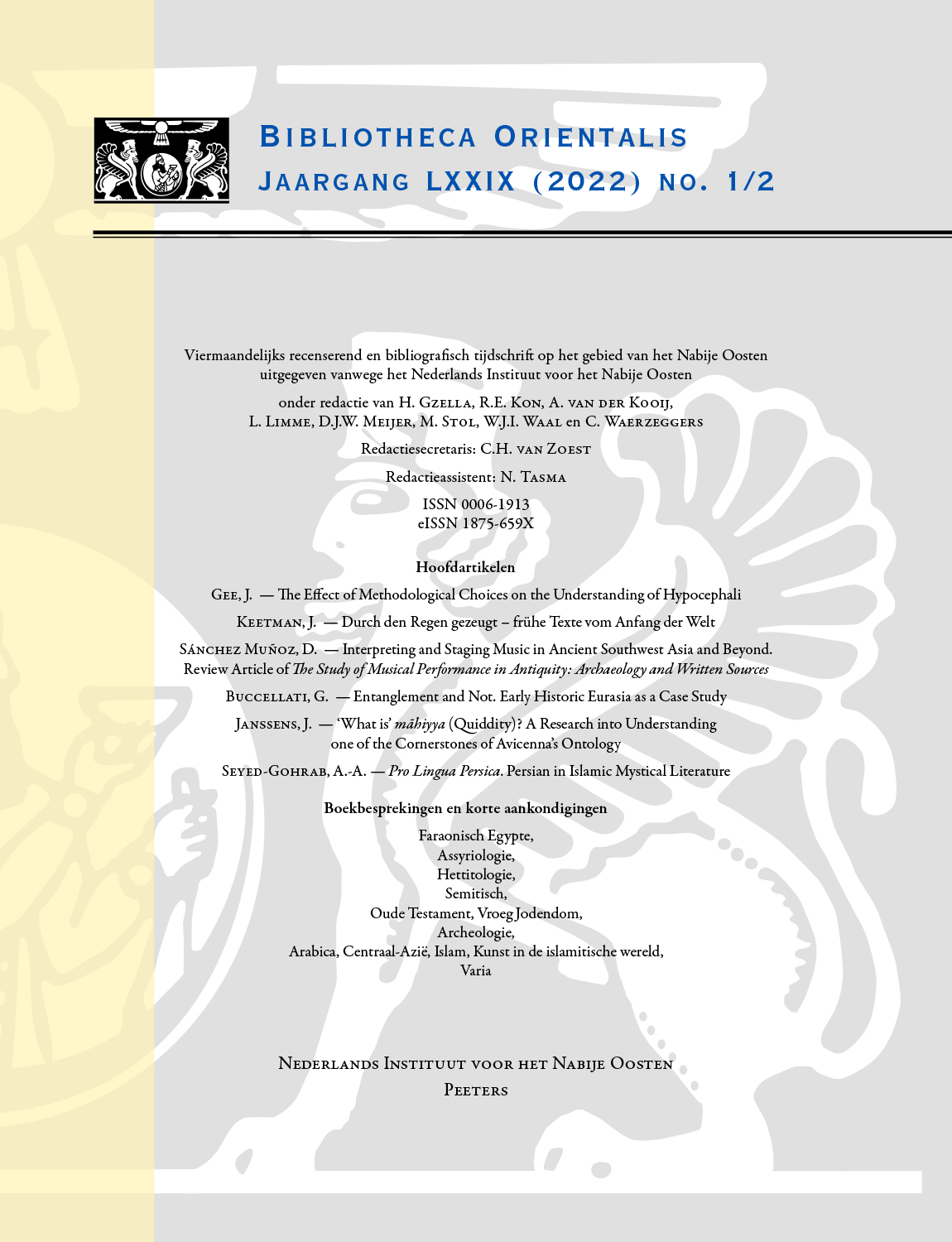next article in this issue  |

Preview first page |
Document Details : Title: Learning the Lessons from the Future Subtitle: Trade in Prehistory Viewed from History Author(s): POSTGATE, J.N. Journal: Bibliotheca Orientalis Volume: 60 Issue: 1-2 Date: januari - april 2003 Pages: 5-25 DOI: 10.2143/BIOR.60.1.2015603 Abstract : It is often proposed that foreign trade was the critical stimulus to the formation of states in Mesopotamia. This lecture looks at how trade was organized in early historical times, and suggests that this may help in identifying its impact on earlier Mesopotamian society. In the 3rd and 2nd millennium we see that different commodities were traded in different ways, and relate differently to the society. Foreign ventures were specialized in terms of the commodities handled and routes followed. The metal trade is particularly relevant to our theme. The merchant community which engaged in foreign trade in Ur III and Early Dynastic times, and perhaps in Old Babylonian times, also undertook the redistribution of staples on behalf of the palace and temples. Our historical evidence suggests that merchants organized themselves collectively but retained their formal independence from the temple or state. Reading this back into the 4th millennium we need to consider the issues of writing and of capital. Were written documents in historical times critical to the procedures of foreign trade? Did the use of silver as a medium of exchange make a significant difference? The production of the surplus needed to provide trading capital implies the creation of an internal redistribution system. Foreign trade logically needs to follow this. Looking at trade’s possible role in the growth of a state society it seems likely that the organization of villages and then cities served as a pattern for the merchant community, rather than vice versa, and the environment’s effects on agriculture seem likely to have been more fundamental and earlier than the effects on trade. |
 |


